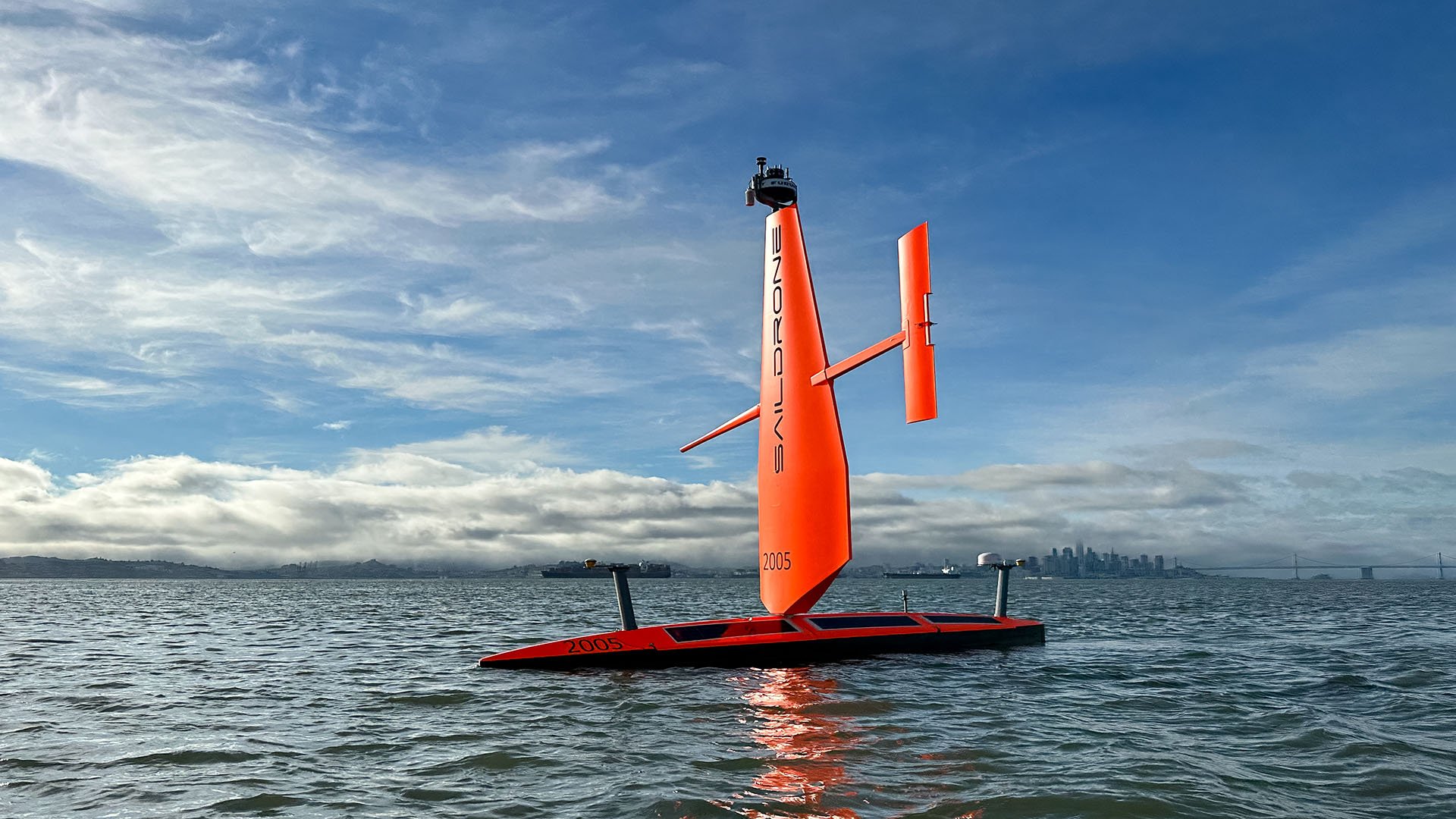Why We Invested in Saildrone: Harnessing the Wind for Ocean Science
Picture a crisp morning on the San Francisco Bay, the water mirroring the azure sky, dotted with what appear to be whimsical, orange sailboats zigzagging effortlessly across the waves. These aren’t your typical seafaring vessels.
These almost robotic-looking objects are called “Saildrones” and are solar-powered surface vehicles, autonomously roaming large bodies of water to collect maritime data. The creator of these Saildrones, Richard Jenkins, developed the core technology during a 10-year effort to break the land speed record for wind-powered vehicles, which he achieved in 2009, in Nevada USA, with a speed of 126.2 mph.
The Problem and Product
The problem that Saildrone addresses is immense – over 80% of our ocean is unmapped, unobserved, and unexplored…we know less about Earth’s ocean floor than we do about the surface of Mars. Saildrones enable efficient and scalable ocean data collection with a minimal environmental impact; the primary existing solution for ocean mapping are large survey ships that are both costly to run and consume many thousands of gallons of fuel per day. Saildrone has established a significant presence in the marine technology field by creating extensive ocean datasets for a variety of applications, including climate study and maritime mapping. Impressively, Saildrones have navigated over 1,000,000 nautical miles and accumulated nearly 25,000 days at sea, providing invaluable data that enhances weather forecasting, carbon cycling analysis, global fishing insights, and climate change understanding. Holding three patents, including one for their unique wing technology, Saildrone’s Voyager achieved a significant milestone in late 2023 by receiving the first-ever classification for an autonomous, uncrewed surface vehicle (USV) from the American Bureau of Shipping (ABS) - the first commercial USV to receive such classification.
The use cases for Saildrones are varied - they are also modernizing maritime domain awareness, delivering decisive tactical and strategic advantage for national security through integrated autonomous technology.
The Team: A Crew Unlike Any Other
The team steering this innovation is as diverse and deep as the waters they explore. The founder, Richard Jenkins, is an engineer who is known for sailing wind-driven vessels on land, ice, and water - and possesses the type of hard-core grit you see in only a select group of entrepreneurs. The extended team consists of engineers, scientists, and seasoned mariners, each member bringing a shared passion for the oceans. The advisory board has deep connections to the DoD, including Admiral James Stavridis, a retired U.S. Navy admiral and former supreme allied commander of NATO.
Currents of Progress
Saildrone's voyage is well underway, with a fleet that has sailed over 500,000 nautical miles and counting. Not only have they garnered attention and contracts from heavyweight entities like NOAA, DoD, and the US Navy, but they are also leading contributors to significant scientific initiatives similar to the Seabed 2030 project, where the Saildrone Surveyor alone mapped over 50,115 square kilometers of the ocean floor – a swath of sea never before charted, revealing what lies beneath over 75% of previously unmapped waters.
A Wave of Impact
Saildrone's vision is for a healthy ocean, and a safe, sustainable planet and they work to advance this mission by sustainably exploring, mapping, and monitoring the ocean to understand, protect and preserve our world. Through partnerships with organizations like the Florida Institute of Oceanography and involvement in philanthropic initiatives, they are democratizing ocean data, aiding in conservation efforts, and educating the next generation of ocean scientists.
In 2021, Saildrone was awarded a grant exceeding $1 million from the Google.org Impact Challenge on Climate. This funding was dedicated to enhancing data collection in the Gulf Stream, a key oceanic region. The significance of this project lies in its potential to greatly improve weather forecasting accuracy and the precision of global carbon budgets.
The Investment Decision
So, why did we invest in Saildrone? We saw more than just the potential for a good return; we saw a conduit for impact in ocean exploration and climate data. As a reminder, we at RTV pair our equity investments with non-dilutive philanthropic capital to be used in unique and charitable ways. In the case of Saildrone, we are thrilled to support work to conduct final calibration and validation of a low- cost, sustainable solution for mapping the seabed of coastal waters, up to 300 meters in depth; this will allow for more mapping missions that will provide critical data to help scientists, philanthropic organizations and charitable entities worldwide better understand, model, and sustainably harvest the tremendous resources of our oceans for years to come. By creating an affordable, low-carbon means of providing high-resolution seabed maps, this solution will enable a much broader and more diverse group of stakeholders to advance their understanding of and engagement with the marine environment.
We are excited to join notable investors including BOND, Emerson Collective, Lux, Tribe and Social Capital in supporting this innovative and world-changing company.
Witty titles and text provided by our intern, Pengfei!

